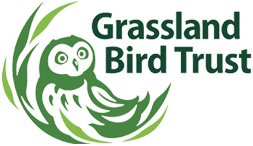WASHINGTON COUNTY GRASSLANDS IBA, FORT EDWARD
“Ready? I’m going to open the box.”
The Short-eared owl erupted from the carrier and winged rapidly across the snowy expanse in front of us.
I held my breath as he slowed and began gliding back and forth at the far end of the field. He seemed to be orienting himself to the familiar surroundings of the Washington County Grasslands Wildlife Management Area (WMA). Within minutes he flew off into the setting sun.
I looked around at the huge smiles on the faces surrounding me. Most of the trip participants had never seen a Short-eared owl. Not unusual, considering these state endangered owls have almost been extirpated (exterminated) from New York State – and the northeast U.S.
“There are no words,” said an emotional Lehman when asked how it felt to release the now healthy Short-eared owl. “It was just a joy to see him fly, knowing all the work I put in gave him his life back.”
I understood how she felt. Seeing one of only a few dozen owls remaining in the state released back into the wild brought tears to my eyes. It gave me a sense of awe – and a feeling that the struggle to conserve their habitat is worth the sacrifices we’ve made.
“It was almost like a reverence,” said field trip co-leader Rich Speidel. “Seeing him go back into his natural habitat – it isn’t something we normally see.”
“Amazing!” said FIBA member David Hasko. “My family is still talking about it.”
The little male Short-eared owl sought shelter from bitter cold that began in late December in the rafters of a local hardware store. The store’s owners left the door open after he was discovered, hoping he’d fly out.
A store employee used a lift to reach the owl after two days. The owl was so weak he let the man pick him up and wrap him in his jacket. The owner called wildlife rehabilitators Dave Larrow and Cathy Lehman, a Fort Edward couple with extensive experience caring for birds of prey.
“He was just starving,” said Lehman. She had to force-feed him the first night, but after that he started eating on his own. “He was eating three to four mice a day. It’s more than he’d usually catch in the wild but he needed to get some fat back on him,” Lehman said. “He went through an awful lot of mice!”
Larrow said they would’ve released the owl sooner but, “it snowed every time we were going to release him.”
The Washington County Grasslands IBA is critical to the survival of Short-eared owls in New York State. It provides important breeding and wintering grounds for ten of eleven of NY’s most imperiled grassland birds and dozens of other species, including Snowy owls, Northern harriers, Eastern meadowlarks and Bobolinks.
DEC’s Wildlife Management Area, located in the heart of the IBA, did not seem to have its usual abundance of mice and voles this winter. The area was hunted heavily by dozens of owls, harriers and hawks last winter.
FIBA’s Alfred Z. Solomon Grassland Bird Viewing Area saw increased activity by Snowy owls, Rough-legged hawks and other wintering birds this year but only 14 acres the nonprofit land trust manages have been permanently protected; fundraising for additional land purchases is ongoing.
Wintering raptors depend on abundant prey populations. They can’t go without food for long, or expend too much energy finding it, before they become too weak to hunt. Young birds like this Short-eared owl are more likely to starve during cold weather because they are less skilled at catching prey. Deep snow cover, like what the region experienced this winter, makes locating and catching prey even more difficult.
We can help Short-eared owls and other imperiled grassland birds by conserving critical habitat they need to survive. If we can conserve enough habitat we can ensure they have an abundant supply of food year-round and safe areas to breed and raise their young. Learn more about FIBA’s work to protect Short-eared owls and what you can do to help at: www.ibafriends.org
—EDITORS NOTE:Laurie LaFond has spent the last eight years of her life working to restore Short-eared owls and other imperiled grassland birds in New York State. She founded the nonprofit land trust Friends of the IBA (FIBA) to conserve critical grassland habitat these birds depend on for their survival. Thanks to an amazing group of volunteers FIBA now manages over 100 acres of prime grassland habitat in the Washington County Grasslands IBA and is partnering with NYSDEC and local landowners to conserve more land; LaFond serves as the organization’s executive director.
